In your high street bookshop, the Fantasy Section can be safely assumed to have books with covers showing Dragons, or men with staves and faces shrouded by priestly hoods, or legions of manic elves about to loose magic arrows on unsuspecting giants. A few shelves along, marked Sci-Fi, metallic spheres negotiate the wastelands of space, or Cyborgs race screaming out of the cover, firing ray guns that even a Schwarzenegger would struggle to lift. Nowhere will you find a shelf marked Visionary Fiction, even though many books that fit that description have to make do with being placed in with Sci-Fi or with Fantasy, rubbing covers with stories with which they may have very little in common.
Since 2000 the Visionary Fiction genre has been recognised as its own distinct category; one where through the type of plot, the characters who make up the story and the story arc for the main protagonists, a spiritual journey is suggested. Indeed, visionary fiction rests implicitly in a spiritual universe, involving a growth in consciousness.
Legends and Fairy Tales, carried for millennia through oral traditions, are early examples of visionary fiction. They often contain supernatural or paranormal elements, and the hero or heroine goes through a series of experiences that suggest an unfolding and deepening of consciousness.
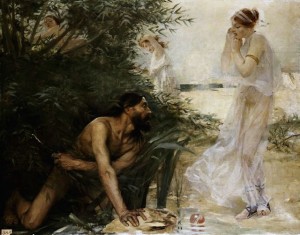
Odysseus arrives unclothed
An early example of this is found in the works of Homer. The Iliad, can be seen as the story of the descent of the soul into materiality (Troy representing the ‘mud’ of existence and perpetual war, the experience of the life of the unawakened soul.) The Odyssey fits very well with the interpretation that Odysseus or Ulysses, represents the journey in consciousness from wrathful man (derived from the etymology of his name) to self-realised man. Odysseus can only tell his story when he reaches the court of King Alcinous having been clothed by his daughter, Nausicca. It is here that finally he has attained reason. Before that, with Calypso and Circe and the horrors and challenges that preceed meeting them, he has to overcome his lower nature (represented by the loss or consumption of his sailors). His story is indeed, one of unfolding consciousness, represented in the end by his meeting with the goddess Athena, once he finally returns to Ithaca. Now, replete with wisdom, he can overthrow the false suitors, to free his Higher Self or Soul, Penelope, the weaver of experience.
Most fairy tales can rightly be seen as suggesting spiritual development. This is as true of a well known classic like Little Red-Riding Hood, as it is of the less well known Goose Girl or Crab Prince.
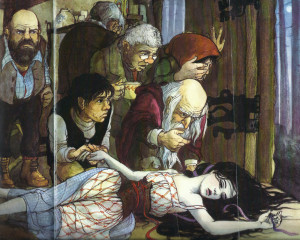
Snow White found in the Dwarves Cottage
Snow White escapes the fatal allure of the false beauty of her Step-Mother to live with the Dwarves (the sevenfold natural instinctive powers in the body) but, still unaware, she can be tricked to eat the poisoned apple (which may represent false knowledge or naive reality). She, like the soul in manifestation, is as though suspended in a crystal casket and can only be awakened by the kiss of the Prince. This kiss, of intellectual power, awakens her to spiritual realities, and she lives free of the power of the natural kingdoms.
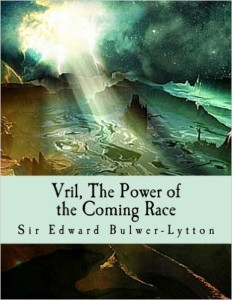
Underground a new power awaits … Vril
The works of Bulwar-Lytton and Marie Corelli in the Nineteenth century are early examples of published novels that fall into this genre. The writing of Edourd Schuré similarly, is spiritual both in its subject matter and the way the stories are crafted. The Great Initiates and From Sphinx to Christ remain well worth reading, and are translated into English, as is The Priestess of Isis.
In the Twentieth century the Inklings at Oxford, included many who wrote first rate visionary fiction, namely C.S. Lewis, J.R.R. Tolkein and Charles Williams. Each of their novels have metaphysical overtones, and the storyline is essentially a spiritual journey. This is much more clear, with Tolkein, in Lord of the Rings, but even The Hobbit fits many of the elements of The Hero’s Journey as outlined by Joseph Campbell.
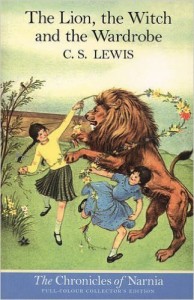
Narnia – a realm accessed through a wardrobe
C. S Lewis, in his Narnia stories, provides, if not a Christian allegory then one that is most certainly spiritual. Given the depth of his conversion to Christianity it is not surprising that his symbolism can be compared to Christian themes. But he also wrote a much less well known novel – also fully visionary fiction – called
Till We Have Faces: a Myth Retold. In this, Lewis recounts the Apuleius version of the Cupid (Eros) and Psyche myth.
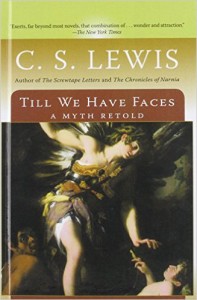
Psyche’s Story as Visionary Fiction
It is a powerful narrative as we follow Psyche’s journey, which in essence the journey we all must take. As with his Science Fiction – the always gripping Cosmic Trilogy – he explores deep spiritual themes and imagery, in a way that is very satisfying for the spiritual seeker. Certainly, in the case of this writer, his works offered confirmation that spiritual ideas were real and to be considered as significant, and not merely entertaining. And this, is the deep value of the best visionary fiction.
More recent examples include The Mists of Avalon (1993,) by Marion Bradley. This superb retelling of the Arthurian Legend from Morgaine’s perspective holds the reader entranced through all of its door-stop like length. The finale, where the mystery of the Grail is presented, is deeply satisfying and an immensely clever example of the writer’s art.
My own novels, Time Sphere and Time Knot, occur in this world, during different historical epochs; the protagonist, Rhory, finds himself and his friends up against forces of murder, chaos and confusion, reaching out over centuries. There is not a single elf; there are no wizards; although Rhory and other characters slip through time, no spaceships land and not a single police-phone box whirs and disappears. But the backdrop to the whole trilogy (final book Time Key) is spiritual and although the history is not intended to be entirely accurate, it is not completely fanciful either.






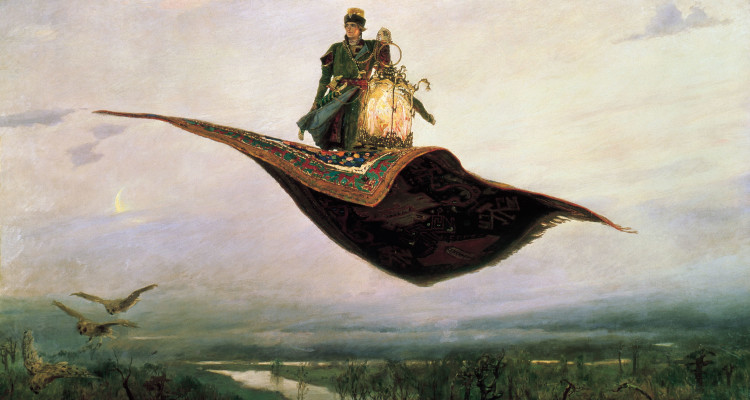
Leave a Reply